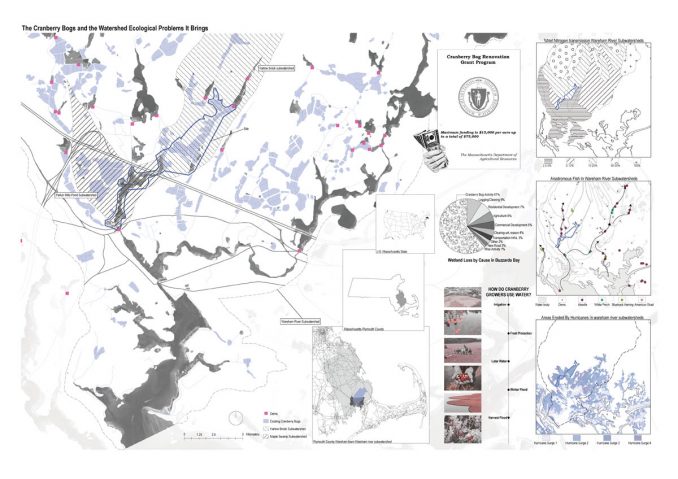
The cranberry industry is the pillar industry of the Wareham Region. Cranberry cultivation has a long history in this area. However, cranberry cultivation, which almost becomes a cultural symbol, has brought much more pain points to the local ecology and economy.
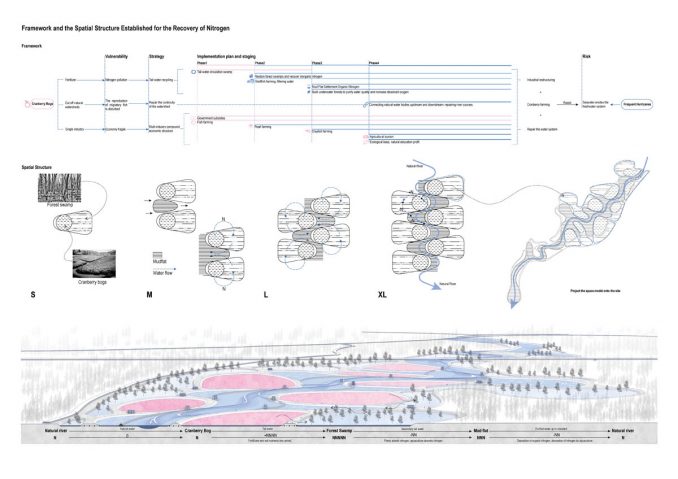
The cranberry industry cannot be separated from water use. The nitrogen fertilizer used in agricultural production thus flows into the natural water bodies, bringing about serious water eutrophication. Meanwhile, for convenient water intake and management, the behaviours of building dams and reducing the river channels have badly influenced the migration of fish. All have brought great crises to the local ecological diversity. In addition, due to the single industry in this area, it is too dependent on the cranberry industry and is economically vulnerable.
Based on the tail water treatment of the cranberry industry, this project tries to solve the water pollution, repair the river channels, and introduce new industries by establishing an ecological tail water handling system to make up for the farmers’ economic loss in the ecological establishment and decrease the serious dependent status of the cranberry industry in the local.
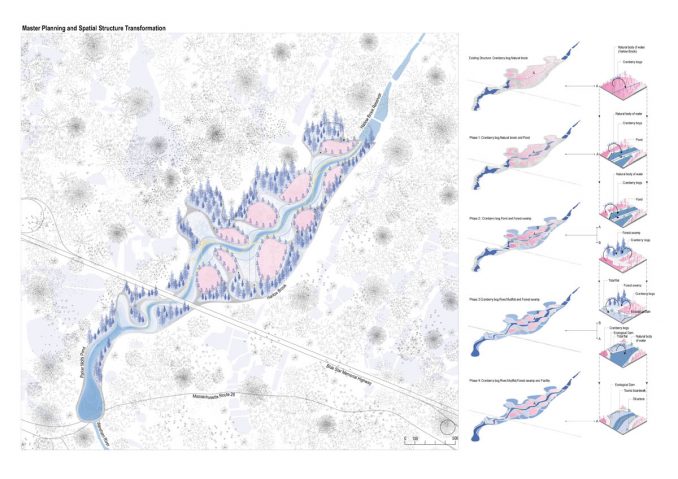
At the heart of this plan is the creation of a cranberry tailwater recycling system that recycles excess nitrogen and spawns multiple types of water-based agriculture. This system takes the spatial structure as the base and transforms the single spatial structure of cranberry swamp into a composite spatial structure composed of cranberry swamp, forest swamp, mudflat and river channel after a series of changes. Harvesting and growing cranberries require water from natural rivers, after which a large amount of cranberry tailwater is produced. The nitrogen-laden cranberry tailwater will flow through the forest swamp, bringing nutrients to the crayfish and underwater forest there. It then flows through mudflats, where freshwater shellfish further recycle and remove nitrogen from the water, eventually flowing back into natural rivers. Cash crops such as crayfish, pearls and fish produced in this process will further supplement farmers’ income. At the same time, the industry will be compounded to better face the risks and impacts brought by hurricanes and other disasters. During the whole process, the river channel has also been widened, and the reproduction of anadromous fish has also been improved. When the transformation of the spatial structure is completed, combined with the construction of some trails and facilities, the area can further develop agricultural tourism with cranberry as the core, and the characteristic cranberry landscape has good tourism potential.
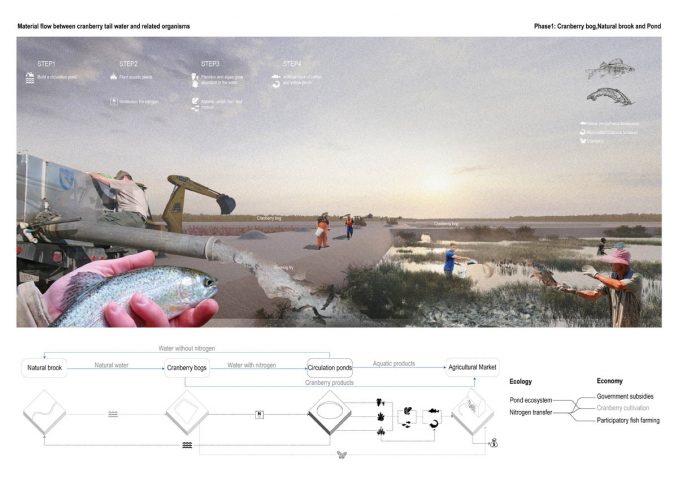
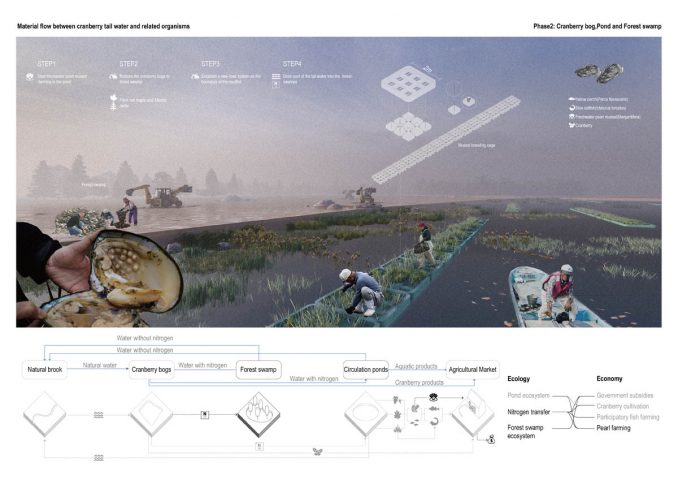
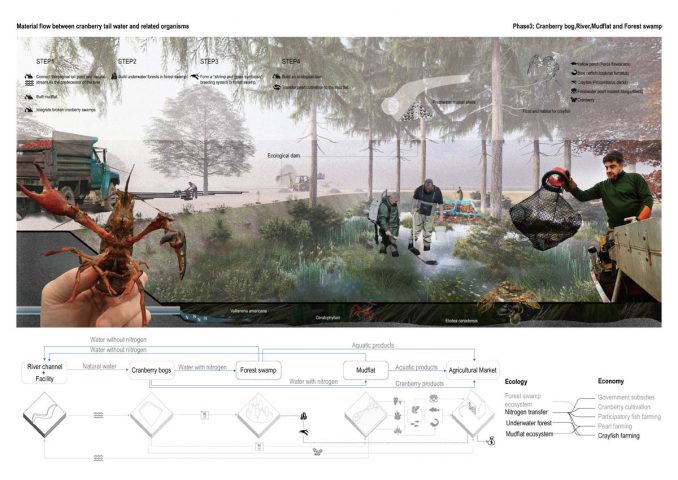
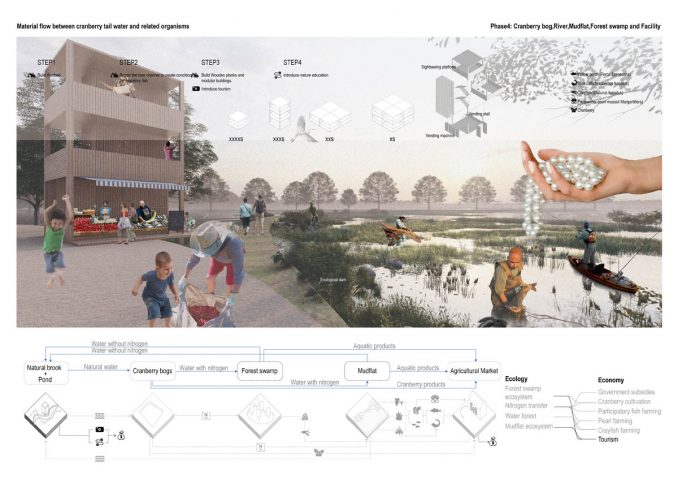
Student Project | Flowing Through Cranberry Bogs Industry Transformation Agricultural Landscape | Li Yumeng
Student Name: Li Yumeng
School: Central Academy of Fine Arts, Beijing, China.
Supervisor: Lin Minzhi
